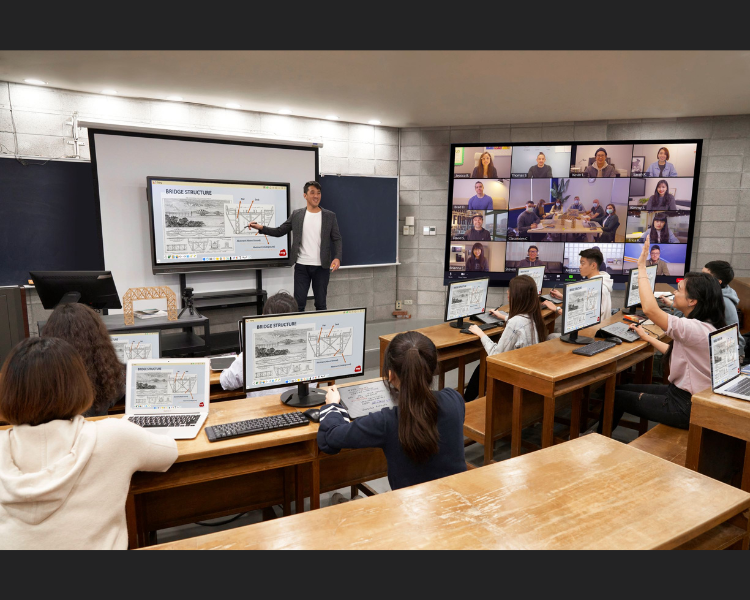
Unlocking Hybrid Learning: Technology and its Advantages
The rise of hybrid classrooms marks a significant evolution
in education, blending the best of in-person and online learning. This model
thrives on technology, enabling Blended Learning through the Seamless
Integration of various tools. Understanding how this technology works and its
benefits is crucial for educators and students alike.
How Hybrid Classroom Technology Works:
- Bridging Physical and Virtual: The core function is to
connect in-class and remote learners simultaneously. This involves a suite of
hardware and software working in tandem.
- Visual Capture & Distribution: High-definition cameras
capture the classroom environment, allowing remote students to see the
instructor, whiteboard, and in-class interactions.
- Crystal-Clear Communication: Enhanced Audio & Video
systems are vital. High-Quality Audio, coupled with sophisticated Audio
Processing (noise cancellation, echo reduction), ensures remote students can
hear clearly and participate effectively. Microphones strategically placed in
the classroom capture all voices.
- Interactive Engagement: Interactive whiteboards and
screen-sharing capabilities allow instructors to present digital content and
facilitate collaborative activities with both in-person and remote students.
- Learning Management Systems (LMS): These platforms serve as
central hubs for distributing materials, managing assignments, and fostering
communication outside of live sessions, further supporting Seamless
Integration.
- Video Conferencing Platforms: These platforms are the
backbone of live interaction, enabling real-time audio and video communication,
screen sharing, and chat functionalities.
Benefits of Hybrid Classroom Technology:
- Unparalleled Flexibility: Flexibility is a key advantage.
Students can choose their learning modality based on their needs, promoting
accessibility and accommodating various circumstances.
- Enhanced Accessibility: Hybrid models break down
geographical barriers, allowing students from anywhere to participate in
learning.
- Personalized Learning: Blended Learning approaches,
supported by technology, enable educators to cater to diverse learning styles
and paces.
- Increased Engagement: Interactive tools and multimedia
resources can create more engaging and dynamic learning experiences for all
students.
- Improved Communication: Enhanced Audio & Video,
particularly High-Quality Audio and effective Audio Processing, ensure clear
and inclusive communication, fostering better understanding and participation.
- Resilience and Continuity: Hybrid infrastructure provides a
robust learning environment that can adapt to disruptions, ensuring continuity
of education.
In conclusion, hybrid classroom technology, with its focus
on Seamless Integration and high-quality communication through Enhanced Audio
& Video and Audio Processing, empowers Blended Learning and offers
significant Flexibility and numerous benefits for both educators and students,
shaping the future of education.